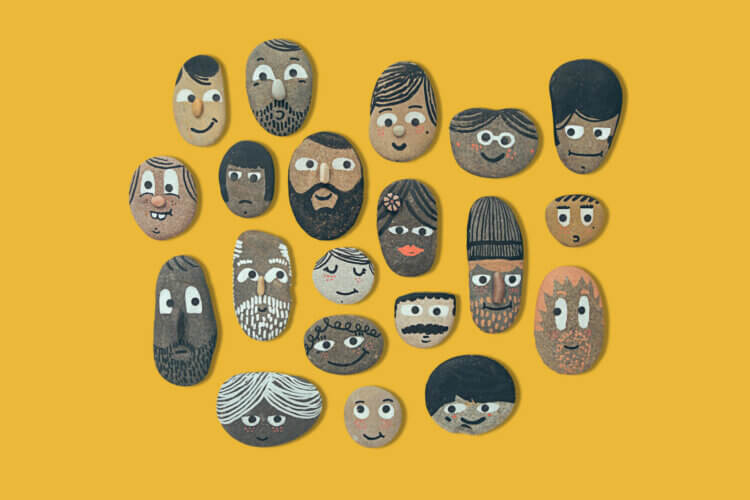We all carry hidden prejudices – subtle leanings that shape our thoughts and actions. These biases act like invisible weights on the scales of our judgment, tilting us towards or away from certain ideas, people or situations.
More often than not, we don’t even realize the prejudices we hold. Like whispers in the back of our minds, unconscious bias acts as automatic, deeply ingrained preferences that shape our perceptions and actions.
It often contradicts our conscious beliefs.
In this article, we will explore how to recognize and overcome our own unconscious biases in the workplace.
Impact of unconscious bias in the workplace
Although we’d like to think we’re objective, the truth is, our brains are wired with shortcuts that can lead to some seriously biased thinking. This is especially important to remember when it comes to making decisions about people, like in hiring, performance reviews or any interactions with our colleagues.
The effects of unconscious bias on employees can be deeply personal and detrimental. When people feel excluded or unfairly treated, they tend to disengage. According to Impact Group, a study of 3,570 respondents across various ethnicities and ages revealed that:
- 33% feel alienated.
- 34% withhold their ideas and contributions.
- 80% wouldn’t recommend their employer to others.
These feelings of isolation and disengagement aren’t just abstract concepts—they have real, physical and emotional consequences. Stress hormones build up in the body, leading to:
- Low or no emotional engagement.
- Increased stress-related illnesses.
- More accidents and absenteeism.
- Higher employee turnover.
- Reduced client satisfaction and higher customer churn.

The effects of bias don’t just disappear after a single incident. In fact, it can take the brain 3-4 hours to process and clear the stress hormones triggered by these negative experiences. So, every time an employee faces discrimination or bias, those stress hormones resurface, preventing them from performing at their best—or sometimes, from performing at all.
Let’s shed some light on these sneaky biases and how to outsmart them:
6 Types of unconscious bias
While there’s no general rule to unconscious bias classification, most commonly we can divide the types of our subliminal prejudices into the following categories.
#1. The “We’re like twins!” bias (affinity bias)

Affinity bias is a subtle yet powerful force in our interactions. It’s the inclination to favor those who share common ground with us, whether it’s a similar background, shared interests or even mirrored personality traits.
Think of it as a kind of mental shorthand; our brains naturally gravitate towards the familiar and comfortable. While this can foster camaraderie and a sense of belonging, it also presents a significant challenge in the workplace.
The danger of affinity bias lies in its potential to undermine objectivity and fairness. When we allow personal preferences to cloud our judgment, we risk making decisions that are not based on merit or qualifications.
In workplaces this can manifest in various ways, from favoring a candidate who reminds us of ourselves during the hiring process, to unconsciously giving preferential treatment to team members who share our interests.
The consequences of such biases can be far-reaching, hindering diversity and inclusion efforts, stifling innovation and ultimately creating an environment where not everyone feels valued or has an equal opportunity to thrive.
Recognizing the influence of affinity bias is the first step towards mitigating its effects. By acknowledging our inherent tendencies to gravitate towards the familiar, we can consciously strive to cultivate a more inclusive and objective mindset. This involves actively seeking out diverse perspectives, challenging our own assumptions and ensuring that our decisions are based on merit and potential, rather than personal preferences.
#2. The “They got lucky” bias (attribution bias)

Attribution bias is a fascinating quirk of human psychology that reveals how we interpret our own actions and those of others. It’s the tendency to attribute our successes to internal factors like talent or hard work, while conveniently blaming external circumstances for our failures. However, when we observe others, we often do the exact opposite, attributing their successes to luck or circumstance and their failures to personal shortcomings.
This mental gymnastics can create a distorted perception of reality, leading to unfair judgments and missed opportunities for growth.
Imagine a colleague who consistently delivers exceptional work. Attribution bias might lead you to downplay their achievements, attributing their success to favorable conditions or mere chance, rather than recognizing their skills and dedication. On the other hand, if a colleague makes a mistake, you might be quick to label them as incompetent or unreliable, overlooking potential external factors that may have contributed to the error.
This bias can have detrimental effects on workplace dynamics, fostering resentment, hindering collaboration and creating a culture of blame. To combat attribution bias, it’s crucial to cultivate self-awareness and empathy. When evaluating others, consciously challenge your initial assumptions. Consider the full context of their actions, acknowledge their efforts and offer constructive feedback instead of jumping to conclusions. By recognizing this inherent bias, we can strive for a more balanced and fair assessment of both our own performance and that of our colleagues.
#3. The “I knew it all along!” bias (confirmation bias)
Confirmation bias is a pervasive cognitive bias that influences how we process information. It’s the tendency to seek out, interpret and recall information that confirms our existing beliefs, while conveniently filtering out anything that contradicts them. Think of it as wearing a pair of mental blinders, focusing our attention only on what aligns with our preconceived notions.
This bias can be particularly problematic in the workplace, especially when it comes to evaluating others. If you’ve already formed an opinion about a colleague, you might unconsciously focus on their actions that reinforce your beliefs, while overlooking evidence to the contrary. This can lead to unfair judgments, missed opportunities for development and even strained relationships.
For instance, if you perceive a team member as lacking initiative, you might be more likely to notice instances where they appear passive, while discounting times when they demonstrate proactiveness. Similarly, in a hiring scenario, confirmation bias can lead you to favor candidates who fit your initial impression, even if others possess stronger qualifications.
Overcoming confirmation bias requires a conscious effort to challenge our own assumptions and actively seek out diverse perspectives. It involves being open to being proven wrong, considering alternative viewpoints and evaluating information objectively. By cultivating a mindset of curiosity and critical thinking, we can mitigate the influence of confirmation bias and make more informed decisions.
#4. The “halo and horns” effects
The halo and horns effects are two sides of the same coin, demonstrating how a single dominant trait can disproportionately influence our overall perception of a person. The halo effect occurs when we allow one positive attribute to cast a glowing light on an individual, leading us to view them in an overly favorable light. Conversely, the horns effect occurs when we fixate on a negative trait, causing us to overlook other positive qualities.
Imagine a new colleague who exudes charisma and confidence. The halo effect might lead you to assume they are also competent and capable, even before you have witnessed their work. On the other hand, if an employee makes a significant error, the horns effect might cause you to question their overall abilities and trustworthiness, despite a history of strong performance.
These biases can significantly distort our judgment, hindering our ability to objectively assess individuals and their contributions. In the workplace, this can lead to unfair performance evaluations, missed opportunities for development and even wrongful terminations.
To mitigate the halo and horns effects, it’s essential to cultivate a balanced perspective. When evaluating others, consciously consider the full spectrum of their qualities and accomplishments. Avoid making snap judgments based on a single interaction or trait. Instead, strive to gather comprehensive information, seek feedback from multiple sources and focus on objective data to form a more complete and accurate assessment.
#5. The “What have you done for me lately?” bias (recency bias)

Recency bias is a cognitive shortcut that causes us to give disproportionate weight to recent events when making judgments or decisions. It’s the tendency to prioritize information that is readily available in our memory, often at the expense of considering the bigger picture. Think of it as our brains playing favorites with the information it has on hand.
In the workplace, recency bias can significantly skew our perception of performance. During performance reviews, for instance, a recent mistake or accomplishment might overshadow months of consistent work. This can lead to unfair evaluations, where an employee’s overall contributions are overshadowed by a single isolated incident.
Imagine an employee who has consistently exceeded expectations throughout the year but recently encountered a setback on a project. Recency bias might cause you to focus on this recent event, potentially overlooking their previous achievements and hindering their chances for advancement or recognition.
To combat recency bias, it’s crucial to adopt a holistic approach to evaluation. Keep detailed records of performance throughout the year, document achievements and challenges and actively seek feedback from multiple sources.
This will help you form a more balanced view of an individual’s contributions, ensuring that your assessment is not overly influenced by recent events. By taking a step back and considering the long-term perspective, you can make more objective and fair evaluations.
#6. The “Go with the flow” bias (conformity bias)
Conformity bias, also known as groupthink, is a powerful social phenomenon that describes our tendency to align our thoughts and actions with those of the majority, even when we privately disagree. It’s the pressure to fit in, to avoid rocking the boat and to maintain harmony within a group, even at the expense of expressing our own unique perspectives.
In the workplace, conformity bias can stifle creativity, suppress dissent and lead to poor decision-making. When individuals feel pressured to conform, they may hesitate to voice opposing opinions, challenge the status quo or propose innovative ideas. This can create an echo chamber where everyone agrees, but crucial perspectives are overlooked and potential pitfalls are ignored.
Imagine a team brainstorming session where a few members dominate the conversation and others feel hesitant to express differing viewpoints for fear of being seen as disruptive or contrary. This can lead to a narrow range of ideas being considered, potentially missing out on innovative solutions.
To combat conformity bias, it’s essential to foster a culture of psychological safety where everyone feels comfortable expressing their opinions without fear of judgment or retribution. Leaders should actively encourage dissent, solicit diverse perspectives and create an environment where constructive criticism is welcomed. By valuing individual contributions and promoting open dialogue, organizations can unlock the full potential of their teams and make more informed decisions.
💡To outsmart conformity bias, you might like to read the following: 5 Slido Activities to Build Psychological Safety In Your Team
Unconscious bias in the workplace is costly

When employees experience the sting of bias, it’s understandable that their dedication and contributions may dwindle. This subtle withdrawal can accumulate into a significant blow to a company’s bottom line. In fact, employees at large companies who perceive bias are almost three times more likely (20% versus 7%) to become disengaged at work.
This kind of “going through the motions” mentality comes at a steep price. Gallup estimates that active disengagement costs U.S. companies a staggering $450 billion to $550 billion each year.
According to Sylvia Ann Hewlett’s Forbes interview, the impact of bias extends beyond immediate productivity. Employees who sense bias are more than three times as likely (31% compared to 10%) to express intentions of leaving their jobs within the year, leading to costly turnover.
Furthermore, bias seems to stifle the very lifeblood of progress: innovation. Those who perceive bias are 2.6 times more likely (34% versus 13%) to admit they’ve held back valuable ideas and market solutions in the past six months.
This suppression of creativity can hinder a company’s ability to adapt and thrive in a competitive landscape.
Just as we explored the hidden forces of unconscious bias within ourselves, it’s essential to recognize how these biases manifest in the workplace, creating an environment where employees feel undervalued and unheard.
By addressing these subtle yet pervasive forms of bias, we can cultivate a workplace where every individual feels empowered to contribute their best work, fostering both individual and organizational growth.
How to combat unconscious bias effectively

Confronting the hidden forces of bias within ourselves is a challenging yet essential endeavor. It requires us to question our assumptions, examine our values and critically evaluate the sources of our information.
Through this introspection, we can uncover the deep-rooted beliefs, stereotypes and cultural influences that shape our behaviors and interactions with others. It is a lifelong process that unfolds through continuous learning, unlearning and the cultivation of empathy, understanding and cultural sensitivity.
Acknowledge your bias
The first step towards mitigating unconscious bias is honest self-appraisal. While it can be challenging to recognize these deeply ingrained tendencies, resources like Project Implicit offer valuable tools for uncovering hidden biases. Their tests, covering topics ranging from race to obesity, can shed light on the subtle ways our judgments may be influenced.
Delve deeper into self-discovery
Seek candid feedback from trusted friends or colleagues who can offer an outside perspective. Embracing this vulnerability and being open to examining our own potential biases is crucial for understanding the origins of stereotypes and prejudice.
Expand your horizons
One powerful way to combat bias is by fostering genuine connections with people from diverse backgrounds. Biases often stem from stereotypes and generalizations; getting to know individuals on a personal level can challenge these assumptions and broaden our understanding.
Embrace the responsibility of mitigation
Once we become aware of our potential biases, it’s essential to cultivate a practice of self-monitoring. By actively observing our thoughts and behaviors, we can interrupt biased thinking and consciously choose non-discriminatory actions.
Learn from missteps
We all make mistakes along the way. Instead of shying away from them, view them as opportunities for growth and relationship building. Acknowledging and apologizing for missteps demonstrates a commitment to personal development and strengthens our connections with others.
💚 Don’t be hard on yourself
Unconscious biases are an inherent part of being human. We all have them, regardless of our background or upbringing. These biases are formed through our personal experiences, societal influences and cultural norms. They can shape our perceptions, judgments and behaviors without us even realizing it.
The important thing is to be aware of your biases and to be willing to work on them. This is not an easy task, as it requires self-reflection, introspection and a commitment to change. It’s a lifelong process, but it’s a journey worth taking. By understanding and challenging our biases, we can become more open-minded, empathetic and inclusive individuals.
Remember, the goal is not to eliminate biases entirely, as that would be impossible. The goal is to become aware of them and to develop strategies for alleviating their impact on our thoughts and actions.
Relevant sources:
- Impact Group: Unconscious Bias at Work: How It’s Affecting Your Workplace
- Gallup Releases New Findings on the State of the American Workplace
- Forbes: New Data Reveals The Hard Costs Of Bias And How To Disrupt It
- Project Implicit




